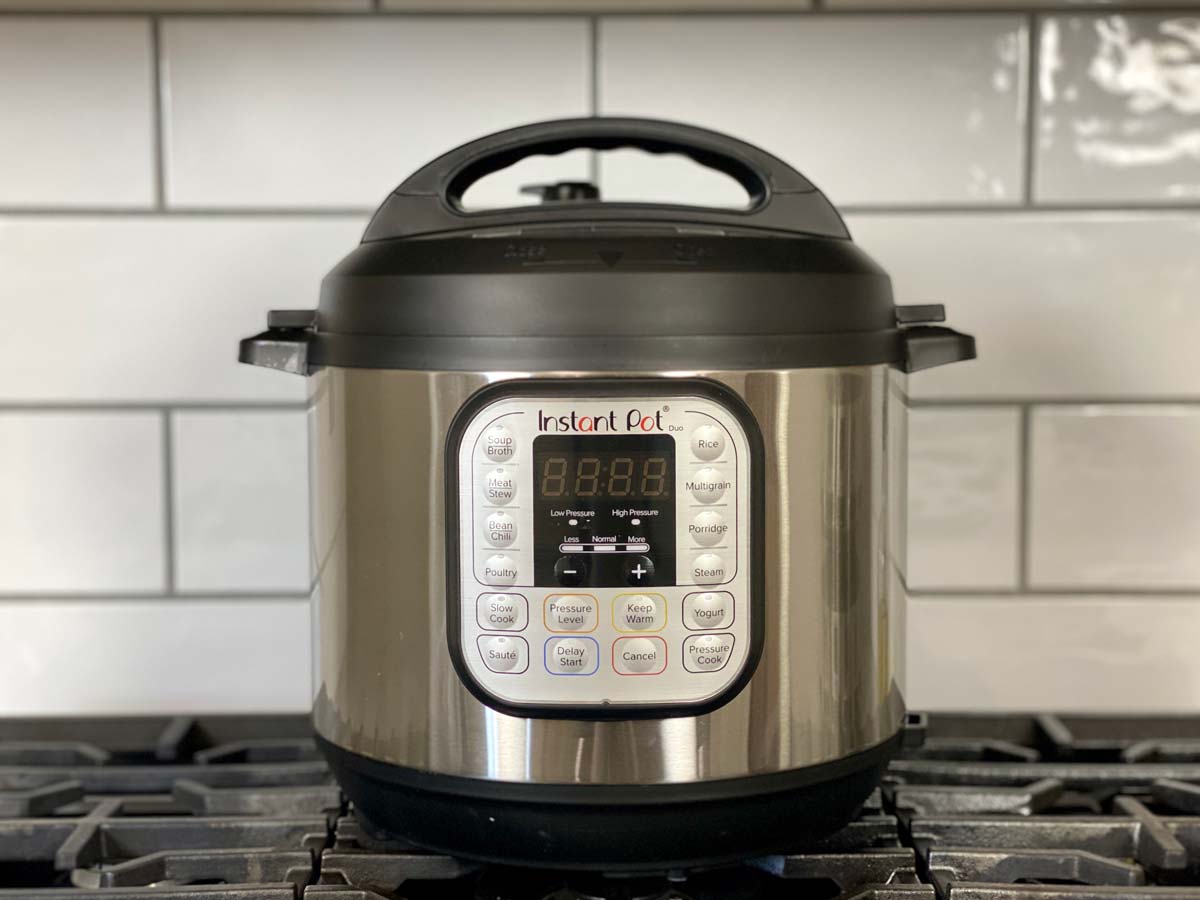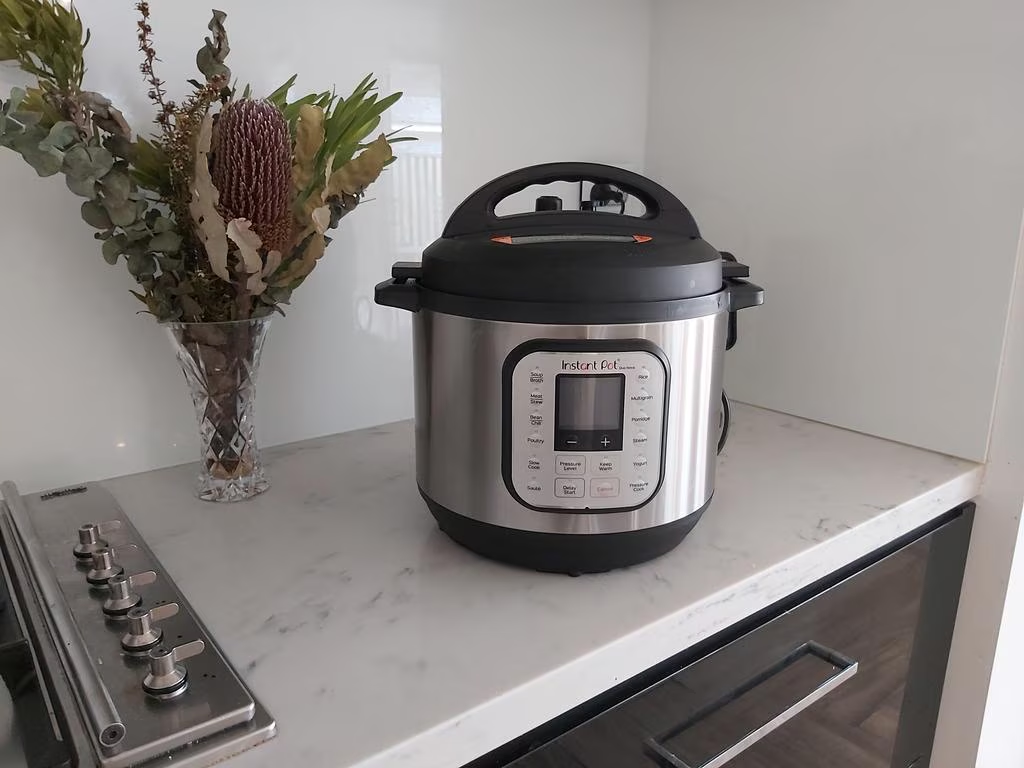Welcome to the wonderful, time-saving world of pressure cooking! If you’ve just unboxed your shiny new appliance or have been eyeing one for a while, you’ve probably noticed a collection of knobs, buttons, and what looks like a little metal or plastic pin on the lid. You might be wondering, What Is A Pressure Indicator and why is it so important? Well, you’ve come to the right place. Think of this little component as the friendly, silent guardian of your pressure cooker, and today, we’re going to get to know it a whole lot better. It’s the key to unlocking delicious, speedy meals with total confidence.
How Does a Pressure Cooker Work, Anyway?
Before we zoom in on the indicator, let’s have a quick refresher. A pressure cooker works by creating a sealed environment. When you heat liquid inside the pot, it produces steam. Because the steam can’t escape, it builds up, dramatically increasing the pressure and the boiling point of the water inside. This super-heated environment cooks food up to 70% faster than conventional methods, saving you time, energy, and locking in nutrients. It’s simple science, but it feels like kitchen magic!
The Pressure Indicator: Your Cooker’s Communication Tool
So, where does the pressure indicator fit into all this? Simply put, the pressure indicator is a safety feature that provides a visual cue about the pressure level inside the pot. Its job is to tell you two crucial things: when the cooker has reached pressure and, more importantly, when it is safe to open the lid.
Think of it like a doorman at an exclusive club. When the party inside is at its peak (full pressure), the doorman keeps the door firmly shut. No one gets in or out. Only when things have calmed down (pressure has been released) will the doorman let you through the door. Ignoring this doorman is a recipe for disaster.
The Two Main Types of Pressure Indicators
While they all do the same job, pressure indicators can look a bit different depending on whether you have a modern electric model or a classic stovetop one.
Stovetop Pressure Cooker Indicators
On older or more traditional stovetop models, the indicator is often part of a weighted valve that sits on top of a vent pipe. This is often called a “jiggler.” When the pot reaches pressure, this weight will start to rock or jiggle, releasing small, controlled puffs of steam and often making a characteristic hissing or rattling sound. This sound is your audible cue that it’s at full pressure. Some stovetop models also have a colored pin system that pops up.
Electric Pressure Cooker Indicators
Modern electric pressure cookers, like the ever-popular Instant Pot, typically use a small, metal pin called a “float valve.” This pin is usually nestled beside the steam release handle.
- Building Pressure: As steam builds inside, it pushes this pin upwards. When it rises to be flush with the lid, it plugs a small hole, fully sealing the pot. This also engages the lid’s locking mechanism, making it impossible to open while under pressure.
- Releasing Pressure: After cooking is complete, the pressure needs to be released. Whether you do a natural release (letting it cool down on its own) or a quick release (manually venting the steam), the float valve will only drop back down once the pressure inside is back to normal. Once that pin drops, the lid is safe to unlock and open.
“The pressure indicator is the most honest component on your appliance. It has no agenda other than to tell you the truth about what’s happening inside that pot. Learn to read it, trust it, and you’ll be a confident pressure cookist for life.” – Dr. Amelia Vance, Kitchen Appliance Safety Expert
Why You MUST Pay Attention to the Pressure Indicator
I remember the first time I used a pressure cooker. I was making a beef stew and was incredibly impatient to taste it. The timer went off, and I immediately went to twist the lid. It wouldn’t budge. I tried to force it, thinking it was just stuck. Thankfully, I stopped and re-read the manual. That little float valve was still up, telling me loud and clear: “STOP! It’s not safe yet!” It was a valuable lesson in patience and safety.
Ignoring the what is a pressure indicator is one of the biggest and most dangerous mistakes a beginner can make. Trying to open a pressure cooker while it’s still pressurized can cause hot liquids and steam to erupt from the pot, leading to severe burns.
Your Pressure Indicator Safety Checklist:
- Always Check Before Opening: Never attempt to open the lid if the pressure indicator is up or the jiggler is still raised.
- Don’t Force It: If the lid feels stuck, it’s almost certainly because there’s still pressure inside. The locking mechanism is doing its job.
- Keep It Clean: A dirty or blocked pressure indicator or float valve can malfunction. We’ll cover cleaning tips in a bit!
- Understand Your Model: Read your user manual. Get to know what your specific indicator looks like and how it behaves.
Common Mistakes to Avoid with Your Pressure Cooker
Beyond just the indicator, a few common slip-ups can trip up new users. Being aware of them will make your experience much smoother and safer.
- Overfilling the Pot: Never fill your pressure cooker more than two-thirds full for most foods, and only half-full for foods that expand, like beans, grains, or pasta. Overfilling can block the vents and safety valves.
- Not Using Enough Liquid: Pressure cookers need liquid (at least one cup is a good rule of thumb) to generate steam. Without it, you won’t build pressure, and you’ll likely burn your food and get a dreaded “burn” error on an electric model.
- Using the Wrong Release Method: Some foods, like roasts, benefit from a slow natural release, which keeps them tender. Foamy foods or delicate vegetables often require a quick release to prevent overcooking. Using the wrong one can turn your perfect meal into mush. You can learn more about this in our [guide to pressure release methods].
- Forgetting to Seal the Vent: On an electric pressure cooker, it’s a rite of passage to forget to turn the steam release handle to the “Sealing” position. If you notice steam continuously pouring out of the handle long after it should have sealed, this is likely the culprit!
Taking Care of Your Pressure Indicator and Cooker
A little maintenance goes a long way in keeping your pressure cooker safe and functional for years.
- Clean the Gasket: The silicone or rubber ring inside the lid is crucial for a good seal. Remove it after each use and wash it with warm, soapy water. Check it for cracks or tears and replace it every 12-18 months.
- Clean the Valves: This is where our star player, the pressure indicator, comes in. The float valve and steam release valve can get clogged with food particles. Use a small brush or a paperclip to gently clear any debris from the holes.
- Wash the Lid and Pot: The inner pot is usually dishwasher safe. Wash the lid by hand, paying close attention to all the little nooks and crannies where the valves are.
- Store It Properly: Don’t seal the lid on the pot for storage. This can compress the gasket and trap odors. Instead, rest the lid upside down on top of the pot.
Frequently Asked Questions (FAQ)
What do I do if my pressure indicator seems stuck in the ‘up’ position?
If the indicator is still up long after the cooking time and you’re sure the pressure should have been released, do not try to open it. First, ensure the steam release handle is in the “Venting” position. You can try tapping the lid gently. If it remains stuck, the safest option is to let the cooker cool down completely for several hours. The pin should eventually drop. If it’s a recurring issue, the valve may need a thorough cleaning or replacement.
Can steam escape from the pressure indicator area?
A tiny bit of steam may escape from around the float valve as the cooker is coming up to pressure. This is normal. The float valve uses that initial steam to push itself up and seal the pot. However, if steam is continuously leaking from it during the entire cooking cycle, your sealing ring might be dirty, damaged, or installed incorrectly.
Is it normal for the pressure indicator to be loose?
Yes, when there is no pressure in the pot, the float valve (on an electric model) will be loose and jiggle around. This is by design. It only becomes firm and stationary once pressure has pushed it up into the sealed position.
How do I clean the pressure indicator?
For an electric pressure cooker, remove the small silicone cap from the float valve on the inside of the lid. The metal pin should then slide out. Clean the pin, the cap, and the hole in the lid with warm, soapy water and a small brush. Make sure it’s completely dry before reassembling.
Will the pressure indicator tell me the exact pressure (PSI)?
No, the standard pressure indicator is a simple binary device—it tells you if there is pressure (up) or no pressure (down). It does not measure the specific PSI (pounds per square inch). Stovetop models with weighted jigglers can sometimes be used to estimate pressure based on the weight used (e.g., 10 or 15 PSI weights), but the pop-up pin is purely for safety indication.
Your Key to Confident Cooking
So, there you have it. The humble pressure indicator is more than just a tiny pin; it’s the central hub of your cooker’s safety system and your most reliable guide on the journey to a perfectly cooked meal. Understanding what is a pressure indicator and learning to trust its simple signals demystifies the entire process, replacing any fear with confidence. Now you can go forth and explore the incredible world of quick, flavorful, and nutritious meals, knowing that your little guardian is always on duty.
